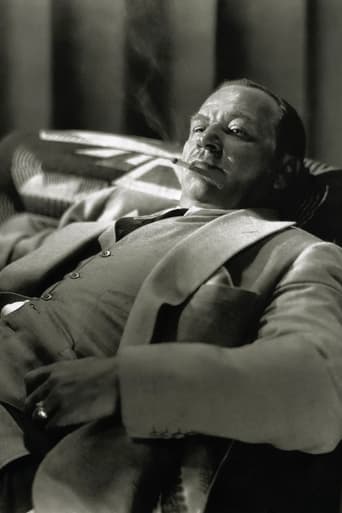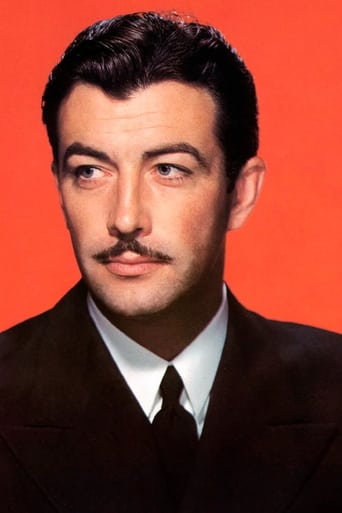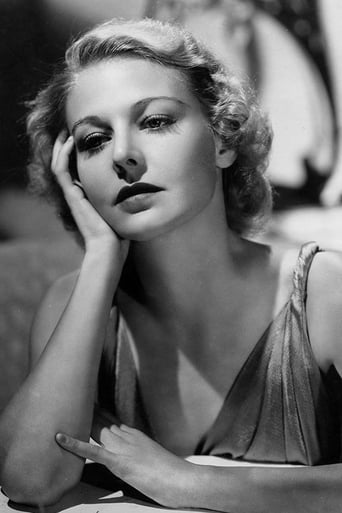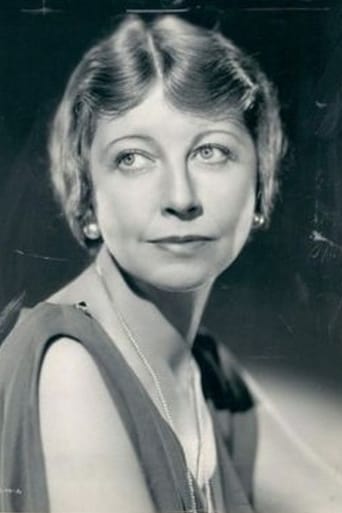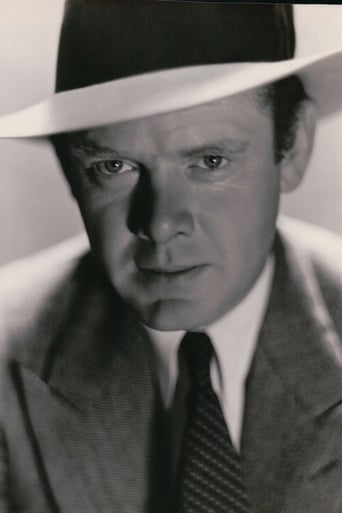GamerTab
That was an excellent one.
Actuakers
One of my all time favorites.
Spidersecu
Don't Believe the Hype
Jonah Abbott
There's no way I can possibly love it entirely but I just think its ridiculously bad, but enjoyable at the same time.
JohnHowardReid
Original release prints were processed in sepia. Copyright 3 January 1939 by Loew's Inc. A Metro-Goldwyn-Mayer Picture. New York opening at the Capitol: 26 January 1939. U.S. release: 6 January 1939. Australian release: 9 March 1939. 105 minutes. COMMENT: Beery receives top billing, even though his role is smaller - due to the fact that he doesn't come on for quite a spell. He is his usual lovable slob, blustering heavily all over the place. Much publicity was made of his two fist-fights with Taylor, but seen today it is obvious that while Beery does most of his own slugging, "Pretty Boy" is doubled for all but the close shots. Speeded-up action doesn't help conviction either. Other camera tricks include process screens in the fox hunt and train ride. Nonetheless we love the train with its converted coach carriages (startlingly unique). Miss Rice is a most attractive (and attractively photographed) heroine. It's good to see Taylor in a period picture, a nice sprawling bit of lavishly produced action-romance. Woody's direction is pacey but undistinguished, although we are treated to great camerawork and costumes. Miss Broderick holds up the comic relief ably, despite weak lines. Qualen has a big part as T's sidekick. So does Rosemond as an ex-slave. Bickford and MacLane are brief villains. OTHER VIEWS: Beery and Taylor got on well together, as Taylor was actually a hunting pal of grouchy Wally off the set. The script is designed to give both stars opportunities. Beery is richly colorful, Taylor virile yet sympathetic in the same man's-man way. Both relish a fight. Both are short with the ladies. Taylor presents his characterization much more convincingly than over-the-top Beery. Of course when it comes to their actual fist-fighting, a double for Taylor is very obviously used in all but the close-ups. The more experienced Beery, who knew how to pull and avoid punches, slugs it out with Taylor's double in the medium and long shots. Unfortunately, Van Dyke decided to garnish the rough stuff by speeding up the action. The end result looks phony. Nor is audience involvement helped by a number of extraneous scenes which pad out the running time and slow down the action. Trimming would certainly help. Even the climax in the snow seems to take forever to resolve into its totally anticipated conclusion. Despite a fair bit of money thrown at the screen, Stand Up and Fight too often lacks vigor. In fact Van Dyke exhibits so little of his customary flair and pacey fluid style, one could be excused for concluding the movie was actually directed by Richard Thorpe. - John Howard Reid writing as George Addison.
ResoluteGrunt
Perhaps a little historical perspective might assist some of today's viewers of this film. (Those viewing the film in 1939 would have been naturally much more knowledgeable of that history than most viewers today.) The film "Stand Up And Fight" (USA, 1939) depicts a fictional story within a complex and multi-faceted historical background. The story is set in 1844 Cumberland Maryland, which became a key east-west point along the westward settler route through the Appalachian Mountains, and a key north-south point along the underground railroad assisting escaped slaves -- when the B&O Railroad opened in 1842, the nation's first Telegraph lines went operational, and the C&O Canal opened in 1850 -- all using rights of way along the same Potomac River that flows past Cumberland and on down past Washington DC.Within this context the story concerns a pre-Civil War racket involving the capture and reselling of fugitive slaves in a key border location between abolitionist North and slavery South just as the railroad was beginning to compete hard against the stagecoach and wagon trains, and the canal was about to move huge quantities of coal out of the mountains. Most of the laborers building the railroad, the canal, the telegraph and the coal mines were uneducated and impoverished recent escapees from the British-oppressed serf plantation of Ireland.Mid-way along that 120-mile Potomac River route between Cumberland and Washington is strategic Harper's Ferry, where the Shenandoah river meets the Potomac and where John Brown's Raid on an armory in 1859 began to galvanize large portions of the nation's public opinion on each side of the slavery/secession issue. At the time of Brown's raid, Harper's Ferry was in the big slavery (Confederate) state of Virginia, which was also the state just across the river in Cumberland in the abolitionist (Union) state of Maryland.The American Civil War began in April 1961. West Virginia became a state a few months later following the Wheeling Conventions of 1861, in which abolitionist delegates from 30 northwestern Virginia counties decided to break away from Virginia. West Virginia immediately became a key Civil War border state and was formally admitted to the Union in June 1863. West Virginia was the only state to form by separating from a Confederate state, the first to separate from any state since Maine separated from Massachusetts in 1820.The north-south terrain of the Appalachian Mountains is what enabled General Lee to move a huge Confederate army through the Shenandoah all the way north into Pennsylvania to meet a similar huge Union army at Gettysburg – far behind Northern "lines" – during the first three days of July in 1863.
MartinHafer
Before I start, I would like to point out that the film was set in 1844 and practically everyone uses revolvers--even though this sort of gun was super-rare at that time. Revolvers would become more common in the 1850s-1860, but in 1844 you just didn't see them because they were so new. Yet, oddly, EVERYBODY seems to have one in the shootout near the end of the film! The revolver was NOT a reliable weapon and few could afford them if they could even find one back then! Oh, well, there are worse historical mistakes I've seen in other films...and I notice them, as I was a history teacher.The story is one of the stranger ones I've ever seen concerning slavery. It isn't really bad...just very, very unusual--especially in its way of portraying the fugitive slave trade. The film begins with Robert Taylor selling off his plantation and slaves because of his debts. It's obvious that he's pretty attached to his slaves and makes sure the families aren't separated--but he STILL sells them like they are property. So, seeing him working for the abolitionist cause later in the film is a bit of a surprise.A bit later, officials with the B&O Railroad try to hire Taylor as an agent to investigate the illegal slave trade and how it might relate to a local transportation company. I liked seeing the old fashioned trains from the 1840s that you see in the film, but Taylor wasn't as impressed nor was he willing to take the railroad's offer. However, oddly, investigating this trade is EXACTLY what Taylor ends up doing--and it hits close to home when one of his old slaves is killed by the scum behind the scheme.Taylor's nemesis throughout the film is the mean and blustery Wallace Beery. His acting, as usual, is far from subtle and he chews up practically every scene in which he appears. As a result, Taylor's good acting is all the more obvious! Overall, an interesting film--mostly because other films made around the same time didn't seem to care much about the plight of slaves. By comparison, think about the way Blacks are portrayed in "Gone With the Wind" which also came out the same year. Sure, it's a great film, but it also made slavery seem not so bad! So "Stand Up and Fight" should at least be given some credit for its rather progressive theme. The only major complaint I had about the film was the ending--it seemed a bit weak.
raskimono
In this slightly unconventional western which does not always follow the usual stylings and cliches of the western, Woody S. Van Dyke, the biggest director, box-office wise on the MGM lot has created a crowd pleaser and a good one too. To believe, this movie deals with trafficking of slaves as an aberration. The movie is set up north where most of the people are abolitionist. There is even a scene where the townspeople want to hang a white man for killing a black man. I kid you not. Taylor is our poverty-stricken southern man who has lost it all and now has to work for a living. Beery runs a stage coach company on the side that helps slaves escape. But someone is capturing this slaves and reselling them back to the southerners. Taylor, when an ex-slave he sets free gets caught decides to find out who. Also, there is a changing of an era clash as the early unrefined and prototype steam engine is just getting started and wants to buy the stagecoach company and its route to link up its tracks. Taylor works for them. Beery and Taylor clash. So who is capturing and reselling the slaves? Is it Beery? If not, then who? Or is Taylor a spy for the railroad company? If not, what is he up to? Enough said. Two big stars who are charming and likable. A romantic interest. MGM cinematography and scenery. A big hit for the studio.

